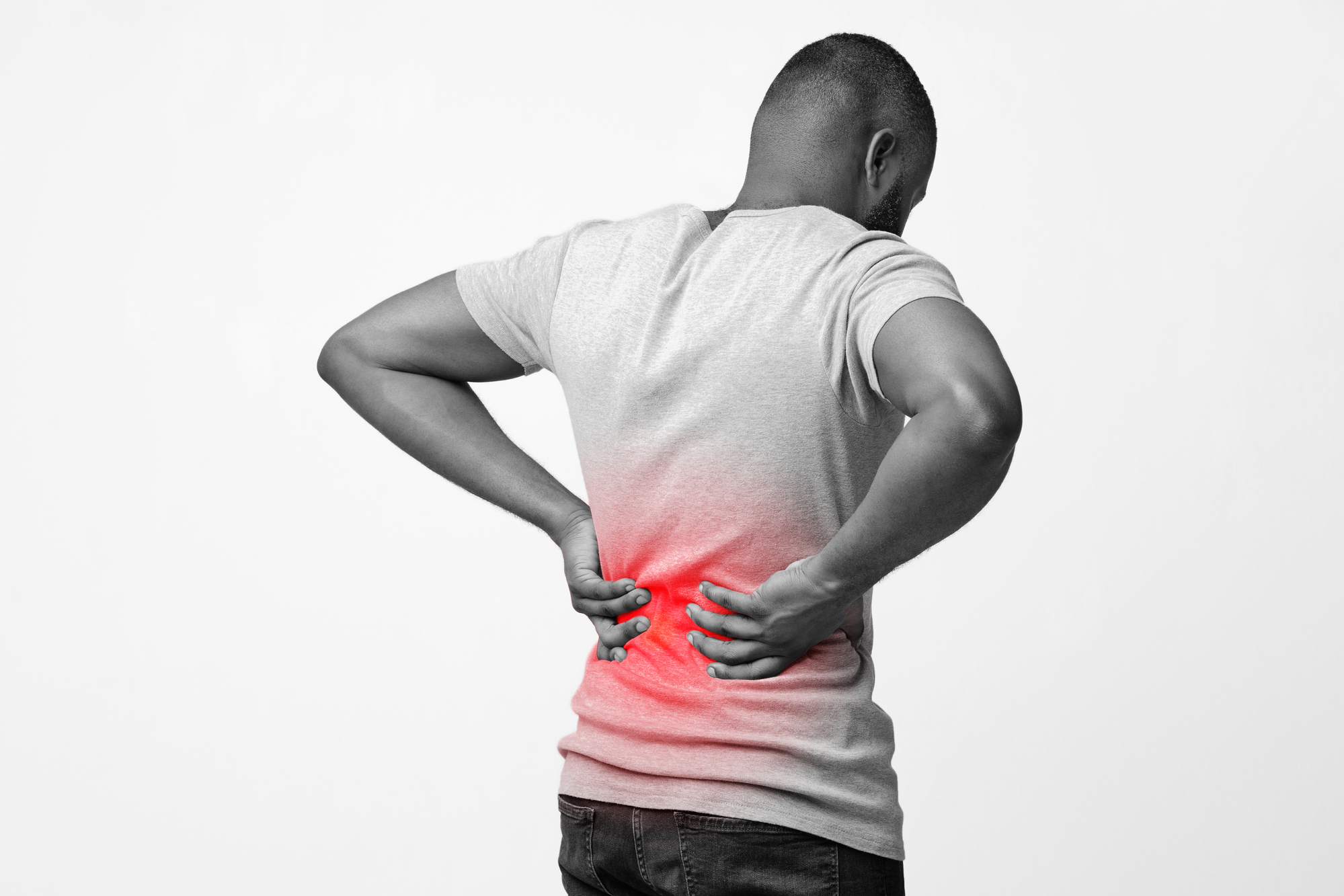The manifestation of sciatic nerve pain, renowned for its thorough examination that commences from the lower back and meanders down to the back of the leg, is an intriguing topic warranting further exploration. This pain, characterized by numbness, tingling, and sometimes debilitating weakness, has the potential to dramatically influence the quality of life, making its understanding a necessity. Given the myriad of symptoms and the varying locations of the pain, how can one accurately discern sciatic nerve pain from other types of discomfort? This complex question necessitates a detailed understanding of the nuances of sciatic nerve pain and its precise location.
Understanding Sciatic Nerve Anatomy
Diving deep into the intricate human anatomy, the sciatic nerve emerges as the largest and longest nerve in the body, playing a critical role in connecting the spinal cord with the leg and foot muscles. The nerve structure basics include two branches, the tibial and common peroneal nerves, which branch out from the sciatic nerve, leading to the lower extremities. These branches allow the transfer of motor and sensory information between the brain and the lower body.
Understanding the anatomy of the sciatic nerve is crucial for implementing sciatica prevention techniques. Regular exercise focused on strengthening the back and core muscles can help reduce the pressure on the sciatic nerve, thereby mitigating the risk of sciatica. Additionally, maintaining good posture, particularly during sitting, standing, and lifting, can prevent undue strain on the lower back, which may contribute to sciatica.
In terms of diet, a balanced intake of vitamins B and D, Omega-3 fatty acids, and calcium can enhance nerve function and potentially prevent nerve damage. Overall, a thorough understanding of the sciatic nerve’s structure and the implementation of preventative measures can greatly reduce the likelihood of experiencing sciatica.
Origin of Sciatic Nerve Pain
The genesis of sciatic nerve pain, medically termed as sciatica, primarily originates from an irritation, inflammation, or compression of the sciatic nerve. This nerve, the largest in the body, extends from the lower spine, through the hip and buttocks, and down each leg. Any disruption to its normal function can lead to discomfort or pain.
- Irritation and Inflammation: Conditions such as lumbar herniated disc, degenerative disc disease, or spinal stenosis can irritate the sciatic nerve, causing inflammation and subsequent pain. This phenomenon, known as radiculopathy, is a common cause of sciatica.
- Compression: Pressure on the nerve from a herniated disc, bone spur, or tumor can lead to sciatic nerve pain. The intensity of pain can vary significantly due to Pain Threshold Variation amongst individuals.
- Genetic Factors in Sciatica: Certain genetic factors could predispose individuals to develop conditions that lead to sciatica. Research has revealed a genetic predisposition to disc herniation and lumbar spinal stenosis, which are common causes of sciatic nerve pain.
Understanding the origin of sciatic nerve pain is essential, as it informs the approach towards effective management and treatment of this often debilitating condition.
Typical Areas Affected by Sciatica
Sciatica mainly affects the lower back and extends to the lower extremities. To accurately identify areas impacted by sciatica, it is important to understand the pathophysiology of the condition. Primarily, the pain originates in the lower back, specifically the lumbar region, progressing along the sciatic nerve path, affecting the buttocks, hips, and legs.
Identifying Sciatic Pain Areas
Understanding the specific regions typically affected by sciatica is crucial in accurately identifying and treating this common form of nerve pain. Sciatica generally impacts three primary areas:
- Lower back: Although we’ll explore this topic further later, it’s crucial to recognize that sciatica often originates in the lower back due to a herniated disk or bone spur.
- Buttocks and hips: Pain often radiates down from the lower back into these areas, often affecting only one side of the body.
- Legs and feet: Sciatica can result in sharp pain, numbness, or even a tingling sensation that extends down the leg and into the foot.
Taking appropriate sciatica prevention measures and understanding the impacts of lifestyle modification can greatly contribute to managing and alleviating these symptoms.
Lower Back and Sciatica
A significant portion of sciatica cases can be traced back to issues in the lower back such as a herniated disk or bone spur, resulting in radiating pain that is both severe and debilitating. This pain typically follows the path of the sciatic nerve, from the lower spine, through the buttock, and down the back of the leg. Exercise benefits these patients by strengthening the muscles that support the back, improving flexibility, and boosting blood circulation, which facilitates healing. Moreover, posture correction plays a pivotal role in alleviating sciatic pain. Adopting ergonomically correct sitting, standing, and lifting methods can reduce pressure on the lumbar spine, mitigating the risk of sciatica. Overall, a holistic approach involving exercise and proper posture may help manage and prevent sciatica.
Symptoms Indicating Sciatic Nerve Pain
Pain radiating down the leg, often described as a sharp or electric shock-like sensation, is a primary symptom indicative of sciatic nerve damage. This pain, usually experienced on one side of the body, can be triggered by various factors, including prolonged sitting, heavy lifting, or sudden movements (Sciatica Triggers). Additionally, the impact of exercise can either alleviate or aggravate this condition, depending on the type, intensity, and execution of the physical activity (Exercise Impact).
While these symptoms may point towards sciatica, it’s important to note that they can also be indicative of other medical conditions. Therefore, proper diagnosis is essential for effective treatment.
The following list provides a detailed overview of three key symptoms associated with sciatic nerve pain:
- Radiating Pain: The pain typically starts in the lower back or buttock and travels down the back of the leg, reaching the ankle and foot.
- Numbness or Weakness: Individuals may experience tingling sensations, numbness, or muscle weakness in the affected leg or foot.
- Increased Pain on Sitting: Pain can intensify when sitting, sneezing, coughing, or making sudden movements.
Identifying these symptoms early on can help in managing the condition effectively and preventing further damage to the sciatic nerve.
The Lower Back and Sciatica
The lower back region, particularly the lumbar area, is often implicated in sciatica, a condition characterized by radiating nerve pain. The origins of this discomfort can be traced back to various causes, including lumbar spinal stenosis, degenerative disc disease, and herniated discs. In order to manage this debilitating condition effectively, a thorough understanding of these causative factors as well as proven pain relief strategies is essential.
Understanding Lower Back Sciatica
Originating in the lower back, sciatica is a condition characterized by pain that radiates along the path of the sciatic nerve, often leading to discomfort in the buttocks and down the leg. The impact of lifestyle modifications and sciatica exercises benefits such individuals greatly.
- Sciatica exercises benefits: Regular physical activity, particularly exercises targeting the lower back, can strengthen muscles, improve flexibility, and reduce sciatic pain.
- Lifestyle modifications impact: Simple changes like maintaining a good posture, avoiding prolonged sitting, and adopting a healthy diet can help manage and prevent sciatica.
- Pain management: Over-the-counter pain relievers, heat/cold therapy, and in certain cases, more targeted treatments like steroid injections, can provide relief.
Understanding these aspects can lead to effective management of lower back sciatica.
Causes of Sciatic Pain
While understanding lifestyle modifications and exercise benefits are key to managing sciatic discomfort, it’s equally important to explore the various causes of this pain, particularly in relation to the lower back and sciatica. The primary cause is often a herniated or slipped disc that presses against the nerve. Other causes include spinal stenosis, a condition that narrows the spine and adds pressure on the sciatic nerve, and spondylolisthesis, a condition where a vertebra slips over the one below it. These issues can severely impact daily activities due to the debilitating pain. Incorporating sciatica prevention strategies, such as maintaining good posture, regular exercise, and a healthy weight, can potentially reduce the risk of these conditions, thereby lessening the likelihood of sciatica.
Effective Sciatica Pain Relief
In order to effectively alleviate the discomfort associated with sciatic pain, particularly concerning the lower back and sciatica, a thorough understanding of various pain management strategies and their corresponding benefits is essential.
- Posture Correction: Poor posture can exacerbate sciatica pain. Correcting posture can help to reduce pressure on the sciatic nerve, thereby mitigating pain. This involves maintaining the natural spinal curves, avoiding slumping or hunching over, and using ergonomic furniture.
- Physical Therapy: This includes exercises that strengthen the lower back, improve flexibility, and promote proper posture.
- Alternative Therapies: Acupuncture, biofeedback, and massage therapy are some alternative therapies that have shown promising results in alleviating sciatica pain. These approaches aim to relax tense muscles, improve blood circulation, and promote overall well-being.
Knowing these methods empowers sufferers to make informed choices about their treatment.
Sciatica and Hip Pain Connection
A significant proportion of patients suffering from sciatica often report concurrent hip pain, suggesting a complex interconnection between these two conditions. This correlation may stem from the close anatomical proximity of the sciatic nerve and the hip joint, both of which could be affected by various pathological conditions.
Furthermore, the sciatic nerve, which originates in the lower back and extends to the legs, passes through the hip area, making it susceptible to compression or irritation due to hip joint abnormalities. This explains the frequent co-occurrence of hip pain and sciatica, as well as the potential for exacerbation of one condition by the other.
Sciatica prevention strategies typically focus on maintaining a healthy and active lifestyle, with an emphasis on regular physical activity and good posture. In the context of hip pain, these strategies may involve hip mobility exercises designed to strengthen the muscles supporting the hip joint and improve its flexibility. Such exercises can help to alleviate the pressure on the sciatic nerve and, consequently, mitigate the symptoms of both conditions.
Sciatic Nerve Pain in Legs
The manifestation of sciatica in the lower extremities, specifically in the legs, presents a unique set of symptoms and challenges that warrant thorough exploration. We will identify the distinct markers of leg sciatica, which include pain, numbness, and tingling sensations, often exacerbated by certain postures or movements. Subsequently, we will examine a range of effective pain management strategies tailored to these symptoms, incorporating both non-pharmacological and pharmacological interventions.
Identifying Leg Sciatica Symptoms
How can one recognize the symptoms of leg sciatica, a condition characterized by the irritation or compression of the sciatic nerve resulting in pain, numbness, or weakness in the legs? Knowing the symptoms is vital and can aid in early diagnosis and the initiation of appropriate sciatica prevention methods.
- Pain: The most prominent symptom, often originating in the lower back or buttock, then extending down the leg. The discomfort can vary from mild aching to sharp, burning sensations.
- Numbness or Muscle Weakness: Patients may experience tingling, numbness, or muscle weakness in the affected leg or foot.
- Symptom Exacerbation by Movement: Physical activity, such as exercise, can impact sciatica, often intensifying the pain.
Identifying these symptoms early can lead to proactive management and potentially prevent further nerve damage.
Effective Pain Management Strategies
Managing sciatic nerve pain effectively involves a combination of lifestyle modifications, physical therapy, and potentially, medication. The first line of defense against this debilitating condition usually involves over-the-counter pain relievers and anti-inflammatory drugs, which can offer temporary relief. However, for long-term management, alternative therapies such as acupuncture and chiropractic adjustments have shown promising results in numerous studies. Another not-to-be-overlooked strategy is incorporating regular physical activity into your routine. Specifically, the yoga benefits for sciatic nerve pain are notable. This low-impact exercise strengthens the muscles supporting the spine, improves flexibility, and promotes better posture, all of which can alleviate pressure on the sciatic nerve. Ultimately, a multi-modal approach to pain management will yield the best outcomes for patients suffering from sciatic nerve pain in legs.
Foot Pain Caused by Sciatica
When sciatica manifests, it often triggers discomfort in the lower extremities, particularly causing foot pain that can greatly impact an individual’s mobility and quality of life. This pain emerges from the sciatic nerve’s irritation or compression, often resulting in a sharp, burning sensation radiating down from the lower back, through the leg, and into the foot.
The influence of footwear on sciatica cannot be overstated. Poorly fitting shoes or those lacking adequate support can exacerbate sciatic symptoms, making it essential for individuals to choose footwear that provides suitable cushioning and encourages correct posture.
Sciatica’s impact on gait is also notable. The pain can alter one’s walking pattern, leading to a limp or awkward stride, increasing the risk of falls and further injuries.
To understand the link between sciatica and foot pain, consider the following:
- Nerve Pathway: The sciatic nerve runs from the lower back, through the buttocks, down the legs, and into the feet. Any irritation or compression along this path can result in foot pain.
- Footwear: Inappropriate footwear can worsen sciatic symptoms, emphasizing the need for supportive, well-fitted shoes.
- Gait Alteration: Pain caused by sciatica can impact an individual’s gait, potentially leading to unsteady movements and additional health risks.
Differentiating Sciatica From Other Pains
Frequently, distinguishing sciatica from other types of back or leg pain can pose significant challenges due to overlapping symptoms and shared pain regions. Sciatica misdiagnosis issues often arise from this complexity, causing patients to undergo treatments that do not effectively address their condition.
Understanding the unique characteristics of sciatica can help in its differentiation. Sciatica typically presents as a sharp, burning pain that originates from the lower back or buttock and travels down the leg. The pain is usually one-sided and intensifies when sitting. This pain pattern, combined with physical examination findings and patient history, can clue clinicians in on a potential sciatica diagnosis.
However, other conditions such as piriformis syndrome or lumbar spinal stenosis can mimic these symptoms, compounding the challenge of accurate diagnosis. This is where non-surgical sciatica interventions can be beneficial. Techniques such as nerve flossing or targeted physical therapy exercises can both alleviate pain and help differentiate sciatica from other conditions. By observing the patient’s response to these interventions, healthcare professionals can gain insights into whether the pain is truly sciatic or stemming from another source.
Importance of Accurate Sciatica Diagnosis
Given these complexities in identifying true sciatica, the necessity for a precise diagnosis becomes increasingly apparent to guarantee appropriate and effective treatment. Correct diagnosis is vital in identifying the exact cause of the pain, be it a herniated disk, spinal stenosis, or spondylolisthesis. This, in turn, determines the course of treatment.
Accurately diagnosing sciatica also helps identify potential sciatica risk factors, which include age, obesity, occupation, prolonged sitting, diabetes, and lifestyle factors like smoking and physical inactivity. Understanding these risk factors can aid in implementing effective sciatica prevention methods, potentially reducing the incidence of recurrent sciatic pain.
The importance of accurate diagnosis can be summed up in three key points:
- It helps identify the root cause of the pain, leading to targeted and effective treatment.
- It aids in recognizing sciatica risk factors, allowing for personalized preventive measures.
- It reduces the risk of misdiagnosis or delayed diagnosis, preventing unnecessary suffering and improving the patient’s quality of life.
Effective Treatments for Sciatic Pain
Addressing sciatic nerve pain necessitates a holistic approach, encompassing a variety of treatments tailored to the individual’s specific diagnosis and overall health condition.
Acupuncture benefits sciatic pain sufferers by stimulating certain points on the body to alleviate pain and inflammation. This Traditional Chinese Medicine technique balances the body’s energy flow or ‘Qi’, thereby encouraging natural healing. Research indicates that acupuncture can greatly reduce sciatic pain, improve mobility, and enhance the quality of life.
Yoga therapy is another effective treatment. It combines physical postures, breathing exercises, and meditation to improve mental and physical health. Specific yoga poses can stretch and strengthen the muscles in the lower back, hips, and legs, areas often affected by sciatica. Additionally, yoga’s emphasis on mindfulness can help patients manage pain perception, reducing the psychological stress often associated with chronic pain conditions.
It’s important to note that these treatments should be administered by qualified professionals to guarantee safety and effectiveness. To summarize, a well-rounded treatment plan that includes acupuncture and yoga therapy can provide substantial relief from sciatic pain, improving the patient’s overall health and well-being.
Frequently Asked Questions
Can Sciatic Nerve Pain Lead to Permanent Nerve Damage?
Yes, prolonged untreated sciatic nerve pain can potentially lead to permanent nerve damage. However, through nerve damage prevention strategies and timely treatment, the risk of sciatica induced paralysis can be greatly reduced.
What Lifestyle Changes Can Help Manage Sciatic Nerve Pain?
To manage sciatic nerve pain, consider lifestyle changes such as diet modifications, incorporating anti-inflammatory foods, and stress management techniques like yoga and meditation. Regular exercise and maintaining a healthy weight can also greatly reduce symptoms.
How Long Does Sciatic Nerve Pain Typically Last?
The duration of sciatic nerve pain varies greatly, influenced by pain intensity and treatment options. It can last a few weeks or persist for several months, depending on the underlying cause and the effectiveness of treatment.
Can Pregnancy Cause Sciatic Nerve Pain?
Yes, pregnancy can indeed cause sciatic nerve pain. Changes in pregnancy posture and the added weight can put pressure on the sciatic nerve. Using maternity belts may help alleviate this discomfort by providing additional support.
Are There Any Exercises to Avoid With Sciatic Nerve Pain?
Yes, exercises with high intensity or impact should be avoided to prevent aggravating sciatic nerve pain. Instead, engage in low-impact exercises and alternative pain management methods such as stretching and physiotherapy.



